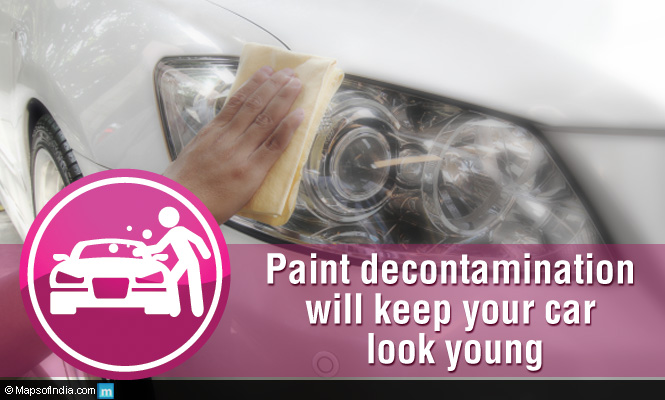We all know now what “young” and alive in the flesh. One of the most important steps of car detailing is decontaminating its paint finish. This is one of the key steps that determine how flawless the final finish of the car is, once the detailing process has been carried out.
The very first step consists of the two bucket wash method which is very conventional, but brings out a whole new purpose in the process of decontamination. The car is washed with a product that removes any existing sacrificial protection – pre-existing waxes or sealants, in addition to dirt, dust, grime etc. The most recommended products are dishwashing soaps or other similar detergents but only once or maximum twice a year since excessive use will cause heavy damage to the paint surface, and would prove exceptionally harsh for rubber and plastic parts.
Dedicated car wash products are also fine, for example a product of the likes of P21 Total Auto Wash, would produce some of the cleanest surfaces. Once the car is washed and dried, and just before the many waxes and polishes are applied on the surface, it is important to prepare the paint through a decontamination process
Decontamination process
The second step is the decontamination process which is essentially the next step to washing in the automotive detailing process.
Paint contamination involves airborne chemical compounds, ferrous particles, adhesives, industrial fallout, rail dust, acid rain, bird droppings, road tar, grime, tree sap, bugs, waters pots, brake dust, road salt, oil, paint overspray, and others, all on or either embedded in the paint surface. Some of these contaminants, actually penetrate or bond to the paint and over time, eat into the clear coat, causing premature failure and quick degradation of the paint and surface quality.
Once the car is washed and dried, a bag test is performed. A thin smooth plastic material – a Ziploc bag for example, is placed on the palm and then rubbed very lightly on the freshly washed car surface. If any snags or bumps are felt, it means that the contaminants have bonded to the surface or are embedded in the paint. In addition to this test, the visual appearance of the paint also offers very visible clues like small yellow stains, water marks, black coloured spots, bug residue etc. This means that the paint surface is contaminated and if decontamination is not done, corrosion is the next thing to occur. Once that happens, the only way out would be to strip the entire car of paint and redo the entire painting process again – spending both a lot of time and money.
Application of detailing clay
The next step of paint decontamination after the wash, includes the application of detailing clay and this process is called claying. Detailing clay has been purpose designed to remove the surface bonded and embedded particles on paint, glass, fiberglass, and metal. Claying is an excellent way of removing the surface bonded contaminants and is generally a foreign process to many car enthusiasts.
Even the newest of cars are subject to paint contamination, and though the myth that new cars should not be treated with clay has been nullified for quite some time, a majority of people are still hesitant to have claying done during the detailing process.
Clay contains mild abrasives designed to remove surface bonded contaminants, and though it is argued by many that polishing and compounding will do the same thing as claying, it is not true. Polishing and compounding only remove the most gullible of the surface contaminants, rounding off the edges of the more stubborn deeply embedded ones and leaving them to eventually cause corrosion.
There are essentially three types of clay – one, a mild grade detailing clay designed for claying a vehicle once or twice a year, two, a fine grade detailing clay that removes everything that the mild one does but is very gentle and can be used monthly or as per need. The third one is a rather aggressive type of clay designed to remove the most stubborn of contaminants. However, a mild clay will often suffice in most cases.
The leading detailing companies get their clay from Japan. As far as vendors go, it is always better to buy from reputed vendors for eg. Meguiar’s, Mother’s, Pinnacle, Clay Magic and so on. In case one has a hard time deciding from the options in hand, it would be the best thing to close your eyes, stop racking your brains and buy a Meguiar’s Mirror glaze professional detailing clay.




